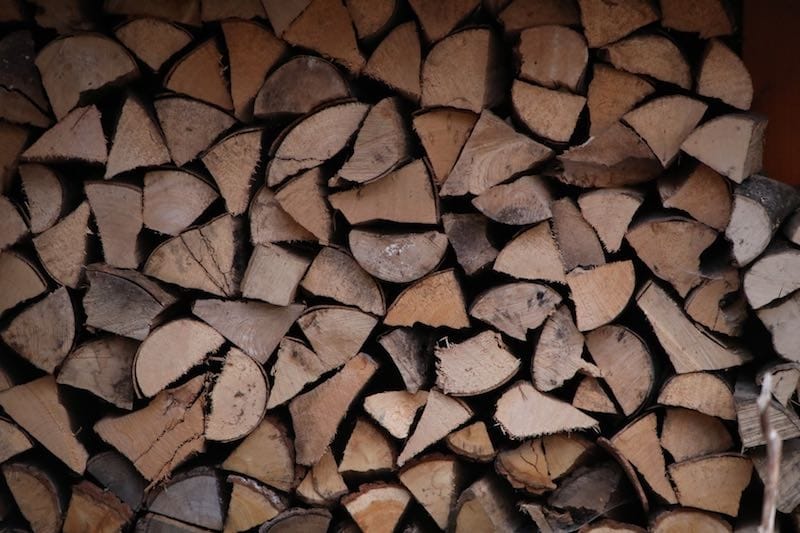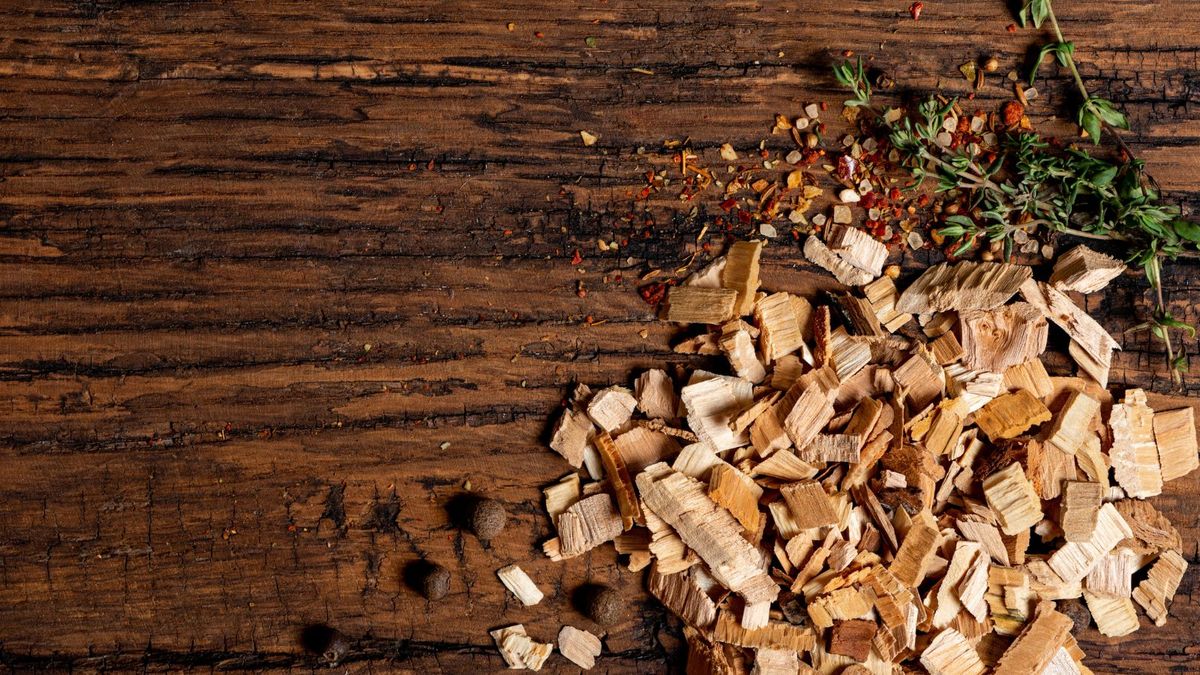When it comes to traditional grills, the primary use of fuel is to generate intense heat. However, with a smoker, the process differs significantly. Heat and smoke are directed through the cooking chamber. The distinctive smoky flavor left on the food depends largely on the type of wood used, making the selection of smoker wood crucial for the final taste.
What should be considered when choosing smoker wood?
The initial rule is to pay attention to the condition and composition of the smoker wood. Since the smoke comes into direct contact with the food during combustion, all components of burnt wood affect the dishes. No one desires moss, lichen, or fungal growth on their meat, let alone the smoke derived from it. Aside from the potential taste implications, harmful substances may also remain. Similarly, chemically treated construction wood, fence posts, railway sleepers, or painted/glued wood should be avoided. Additionally, rotten or moldy wood must not be used.
It’s advised against using woods from trees containing essential oils or those high in resin content. Resin can add bitterness to the flavor and can persistently accumulate in the combustion chamber, affecting subsequent burnings.
The following woods are not recommended for smokers: Douglas fir, larch, fir, pine, yew, cedar, arborvitae, eucalyptus.
Another tip is to only use dry, seasoned wood. Wood is truly dry (moisture content of 20%) only after being properly stored for 1 to 2 years. When storing and drying wood, avoid enclosed spaces like cellars or garages as these increase humidity and hinder or prevent wood drying. An ideal setup is an outdoor dry spot with overhead protection against weather. Storing wood directly on the ground should be avoided as it accumulates moisture. A rack allowing ample air circulation between individual logs is ideal. Suitable weather-protected racks are available at specialty stores or hardware shops. Wood should not be dried for more than 4 years as gases dissipate, reducing its burning efficiency.
Soft smoker wood (density over 0.55 g/cm³) or hard (density over 0.55 g/cm³)?
Many consider wood hardness when determining its burning value. Hardwoods generally have higher burning values than softwoods. Softwood offers advantages as it is cheaper and ignites more easily. However, it burns faster, nullifying the cost benefit through higher usage. Softwood also tends to produce more soot. Popular hardwoods with high burning values include beech, oak, and ash wood, providing 2100 kilowatts per hour per cubic meter (KWh/rm) or 4.2 KWh per kilogram (KWh/kg). Fruit tree wood also falls under the category of hardwood. They impart unique flavors to dishes, enhancing the taste for smoker users. The choice of which aroma pairs best with various dishes is purely a matter of personal taste and should be decided by individual preference. However, certain wood aromas of specific wood types have been favored in the smoker community for particular dishes:

Hardwoods:
- Beechwood: Known for its high burning value (4.0 KWh/kg), beechwood complements all types of meat and fish, even vegetables, making it the go-to all-rounder wood for smokers.
- Oakwood: Also with a high burning value (4.2 KWh/kg), oakwood is favored for fish, grilled sausages, pork, and red meats (beef, veal, and lamb). It’s essential to remove the oak bark as it contains substantial tannic acid.
- Ashwood: Suitable for those desiring a lighter aroma for fish and red meats. It burns quickly, requiring frequent replenishing. The burning value (4.1 KWh/kg) is almost on par with oakwood.
- Walnut wood: Similar to oakwood, walnut wood imparts a heavy aroma. There’s a risk of dishes turning bitter, so it’s often blended with milder woods (such as cherry wood). It’s suitable for beef and game.
- Maple wood: The mild and sweet aroma of maple wood pairs well with poultry, pork, and cheese. With a burning value of 4.1 KWh/kg, it ranks high.
- Hickory Wood: Imparting Sharpness and Pleasant Bacon Aroma to Fish, Chicken, Lamb, Beef, and Pork. Preferred for BBQ, Popularly Used in the USA and Not Easily Available in Germany.
- Pecan Wood: For those finding Hickory too sharp, Pecan offers a similar but milder aroma.
Fruitwoods:
- Cherry Wood: Offers a highly fruity and slightly sweet aroma suitable for all meat types, particularly favored for Pulled Pork. Cherry Wood has a calorific value of 4.3 KWh/kg.
- Plum Wood: An excellent alternative to Hickory, providing a slightly milder, sweet flavor to all meat types.
- Lemon Wood: Imparts a sharp, lightly fruity aroma, retaining its lemon essence in the smoke. Complements fish, poultry, cheese, and pork.
- Apple Wood: Among the versatile fruitwoods, Apple Wood offers a lightly fruity and sweet aroma, suitable for nearly everything, especially for salmon and BBQ.
- Pear Wood: Provides a sweet, slightly woody taste, ideal for pork and poultry.”
Discovering the perfect wood flavor for your smoker is a journey of experimentation. Combining different wood types can expand, intensify, or lessen flavor notes, sometimes advised (e.g., walnut and cherry wood).
In addition to logs, Wood Chips can be used to create the desired wood aroma, even when using charcoal for firing. Soaking Wood Chips in water before use is recommended to prevent them from burning directly.
Where can I get wood for the smoker?

This is a valid question, especially in large cities where firewood might not always be readily available, and not all firewood is suitable for smokers. Firewood is primarily used for heating, often available seasonally, particularly in winter. Hardware stores typically sell grills, fire pits, and stoves, making them a good option for obtaining smoker wood, even in summer. In rural areas, forestry is a significant industry. It’s worth exploring beyond the city limits to inquire about wood for the smoker.
Specifically ask for smoker wood, as firewood may encompass many types less suitable for smoking. For instance, spruce, a rapidly growing tree mainly cultivated in forestry, is unsuitable for smoking due to its resin content. Oak and beech, however, are recommended. Obtaining wood from fruit trees can be more challenging. The internet can be a helpful resource in these cases. It’s essential to remember that smoke comes into contact with food. Orchard trees are regularly sprayed with pesticides unless grown organically, so careful inquiry is necessary. The best assortment of different smoker woods, including rare varieties like hickory wood, is available online. Prices might decrease for larger quantities (always consider shipping costs). Forums focused on grilling or specifically on smokers often have excellent sources.

